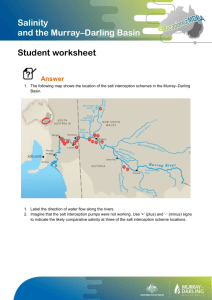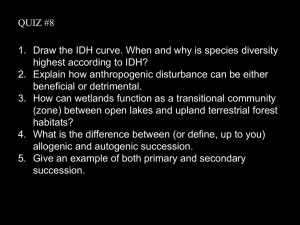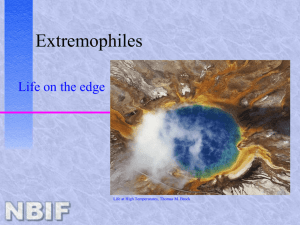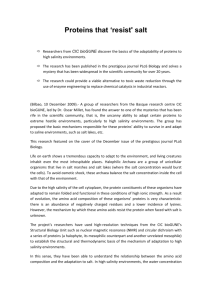Halophiles_12May06
advertisement
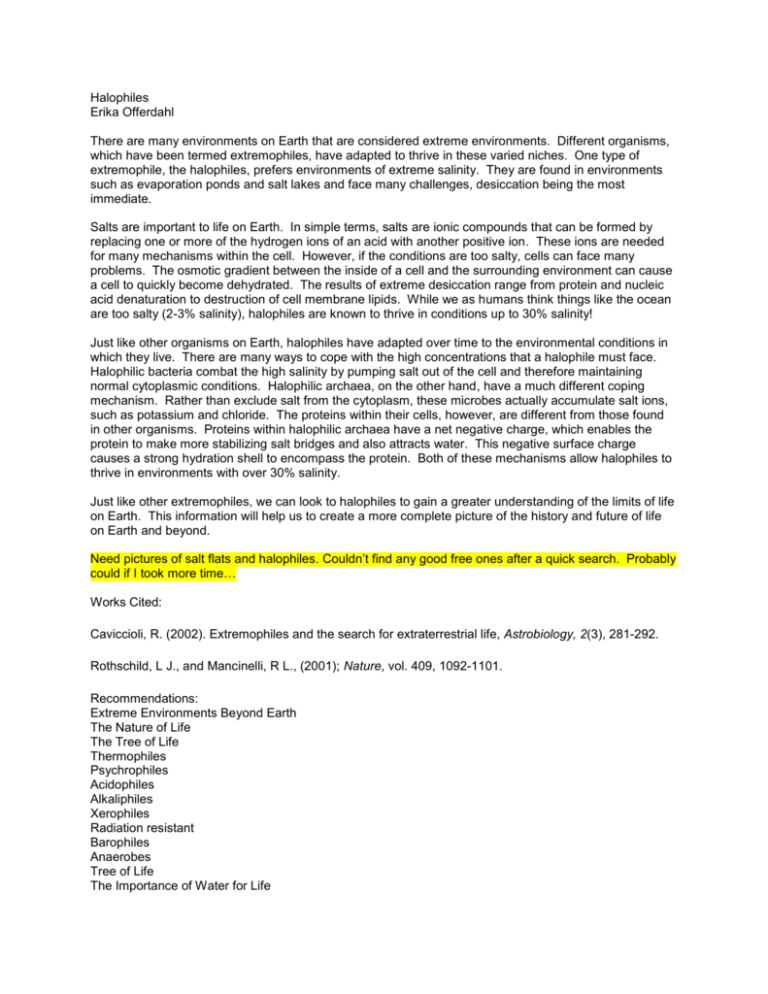
Halophiles Erika Offerdahl There are many environments on Earth that are considered extreme environments. Different organisms, which have been termed extremophiles, have adapted to thrive in these varied niches. One type of extremophile, the halophiles, prefers environments of extreme salinity. They are found in environments such as evaporation ponds and salt lakes and face many challenges, desiccation being the most immediate. Salts are important to life on Earth. In simple terms, salts are ionic compounds that can be formed by replacing one or more of the hydrogen ions of an acid with another positive ion. These ions are needed for many mechanisms within the cell. However, if the conditions are too salty, cells can face many problems. The osmotic gradient between the inside of a cell and the surrounding environment can cause a cell to quickly become dehydrated. The results of extreme desiccation range from protein and nucleic acid denaturation to destruction of cell membrane lipids. While we as humans think things like the ocean are too salty (2-3% salinity), halophiles are known to thrive in conditions up to 30% salinity! Just like other organisms on Earth, halophiles have adapted over time to the environmental conditions in which they live. There are many ways to cope with the high concentrations that a halophile must face. Halophilic bacteria combat the high salinity by pumping salt out of the cell and therefore maintaining normal cytoplasmic conditions. Halophilic archaea, on the other hand, have a much different coping mechanism. Rather than exclude salt from the cytoplasm, these microbes actually accumulate salt ions, such as potassium and chloride. The proteins within their cells, however, are different from those found in other organisms. Proteins within halophilic archaea have a net negative charge, which enables the protein to make more stabilizing salt bridges and also attracts water. This negative surface charge causes a strong hydration shell to encompass the protein. Both of these mechanisms allow halophiles to thrive in environments with over 30% salinity. Just like other extremophiles, we can look to halophiles to gain a greater understanding of the limits of life on Earth. This information will help us to create a more complete picture of the history and future of life on Earth and beyond. Need pictures of salt flats and halophiles. Couldn’t find any good free ones after a quick search. Probably could if I took more time… Works Cited: Caviccioli, R. (2002). Extremophiles and the search for extraterrestrial life, Astrobiology, 2(3), 281-292. Rothschild, L J., and Mancinelli, R L., (2001); Nature, vol. 409, 1092-1101. Recommendations: Extreme Environments Beyond Earth The Nature of Life The Tree of Life Thermophiles Psychrophiles Acidophiles Alkaliphiles Xerophiles Radiation resistant Barophiles Anaerobes Tree of Life The Importance of Water for Life






